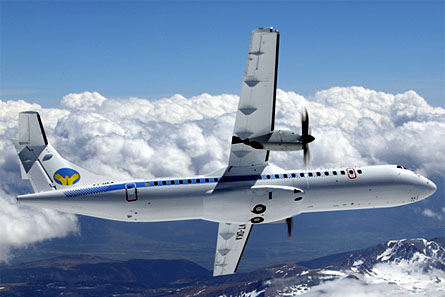Regional aircraft manufacturer ATR is improving its product lines through a new higher thrust Pratt & Whitney Canada ATR 72-500 powerplant and upgraded avionics.
Speaking during a recent media briefing in Paris, ATR chief executive Filippo Bagnato said: “We will have a new engine certificated next year, a new version of the Pratt & Whitney with 5% more power.”
ATR 72-200s are powered by the 2,160shp (1,600kW) PW124, while the 2,475shp PW127 powers the ATR-210 and the updated 2,475shp PW127F is the powerplant currently fitted on the ATR72-500. Bagnato says the development of a new engine is being made to aid the type’s operation in hot and high conditions, where the extra power is important. The ATR 42-500 engine is unaffected by the change as it has a de-rated version of the PW127F engine and has no need for additional thrust.

ATR senior vice president commercial John Moore says: “In certain environments, with the ATR 72, we hit limits which we can counteract.”
He explains the additional thrust will be available on demand through a toggle switch, enabling it to be used only when needed. Moore says the development, which will lift the single engine ceiling by 1,000ft (330m) and shorten flight times, has not been done with a specific operator or region in mind.
ATR is also working to update its avionics, which originally date back to a 20 year-old design. Moore describes the shift as a “fairly sizeable upgrade”. The upgrade will initially be used in new aircraft, but might ultimately become available for retrofit. Honeywell, Thales and Rockwell are all in the running, says Moore.
“We are evaluating different suppliers. We have come up with a good definition and are waiting or the final go-ahead for our shareholders and to put it into the final development stage.
“Our main objectives are to upgrade and modify the existing cockpit in terms of pilot workload and to upgrade the equipment which is becoming obsolete and difficult to source. There will also be benefits to operating weight and costs.”
Technology has not moved on sufficiently for ATR to launch a new aircraft programme today, but Moore says the regional manufacturer is keeping an eye on developments in the narrowbody sector.
“The technology that exists today is more or less the technology that we are offering. There is not a quantum improvement that justifies the development of a new aircraft programme. But around the 2015 timeframe there may be narrowbody developments which could be applied to the turboprop market,” he says.
Source: FlightGlobal.com























